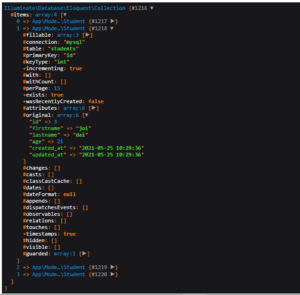

Additionally, let's assume that Photo models "have many" Tag models and Post models "have many" Comment models. We will assume the ActivityFeed model defines a "morph to" relationship named parentable that allows us to retrieve the parent Photo or Post model for a given ActivityFeed instance. In this example, let's assume that Photo and Post models may create ActivityFeed models. If you would like to eager load a "morph to" relationship, as well as related model counts for the various entities that may be returned by that relationship, you may utilize the with method in combination with the morphTo relationship's morphWithCount method. We can summarize the relationship's table structure like so:Ĭounting Related Models On Morph To Relationships In order to provide support for roles being assigned to multiple users, the role_user table is needed. This would mean that a role could only belong to a single user. Remember, since a role can belong to many users, we cannot simply place a user_id column on the roles table. This table is used as an intermediate table linking the users and roles.

The role_user table is derived from the alphabetical order of the related model names and contains user_id and role_id columns. To define this relationship, three database tables are needed: users, roles, and role_user. So, a user has many roles and a role has many users. For example, a user may be assigned the role of "Author" and "Editor" however, those roles may also be assigned to other users as well. An example of a many-to-many relationship is a user that has many roles and those roles are also shared by other users in the application. Many-to-many relations are slightly more complicated than hasOne and hasMany relationships. Return $this -> throughEnvironments () -> hasDeployments () Eloquent makes managing and working with these relationships easy, and supports a variety of common relationships: For example, a blog post may have many comments or an order could be related to the user who placed it.
REVERSE QUERY RESULT ELOQUENT LARAVEL HOW TO
I see why it won't work but I'm not sure how to approach the solution. Also sorting Operation::find($id) makes no sense either since I'm only querying operation, I only get the info from the members in the view, when I'm doing the foreach loops. Yes, I reached the same conclusion about trying to sort the models. :/ĭoes the reasoning behind this make sense? You'd have to sort the results as mentioned by Ehesp in the second post, unless you want to adjust your relationships. Return $this->belongsTo('Hostess', 'hostess_id')->orderBy('lastname', 'desc') īut the above doesn't make sense because each Teammember belongsTo (meaning it is only related to one) Hostess. I think uldisrudzitis meant something like the following.

Teams don't have a lastname, so that is the reason for the error. That returns the Operation's Teams ordered by lastname. Return $this->hasMany('Team')->orderBy('lastname', 'desc') I'll give an example of what I want to do: I have table Operation (it's like an event), in each operation there will be many Teams. Change Operation.php content to public function team() Eloquent makes my life easier and I don't have to care much about the queries, as long as my models are connected correctly but now I want to sort my queries and I don't know where to start.


 0 kommentar(er)
0 kommentar(er)
